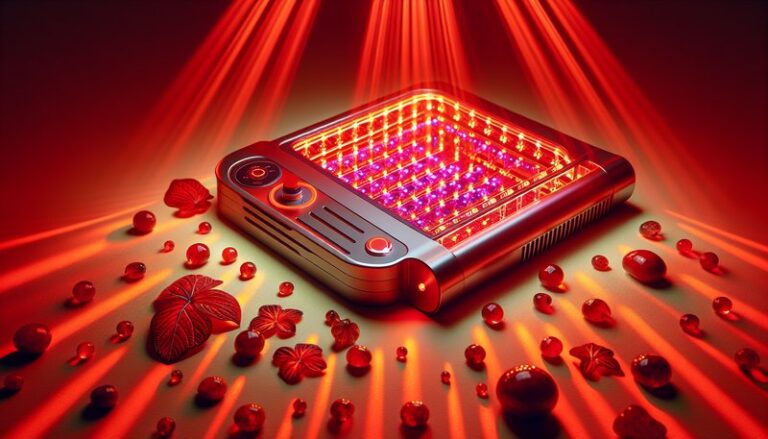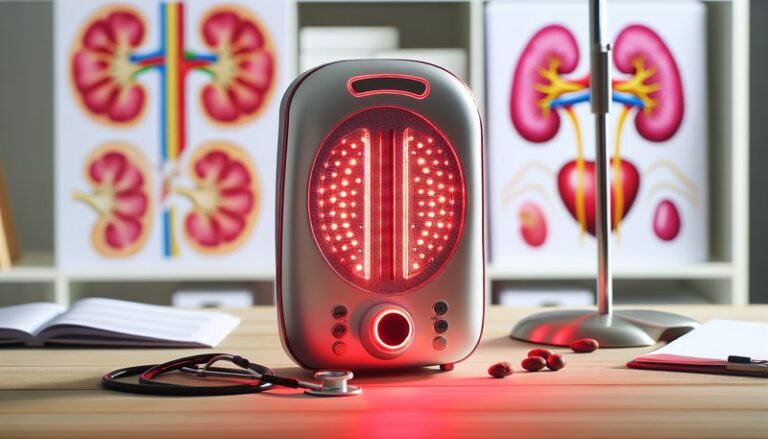Does Red Light Therapy Cause Skin Cancer?
Is red light therapy a miracle treatment or a potential risk factor for skin cancer?
This article aims to explore the safety of red light therapy (RLT) concerning skin cancer. We’ll define what red light therapy is, discuss its benefits, and address concerns about its link to skin cancer. Additionally, we will examine considerations before using RLT and explore alternative options.
Key Takeaways
- Red light therapy is not associated with an increased risk of skin cancer when used properly.
- It offers a range of health benefits, including enhanced skin healing and reduced inflammation.
- Understanding personal skin types and conditions is essential before using any light therapy.
What is Red Light Therapy?
Red light therapy is a non-invasive treatment that employs low-level wavelengths of red light to promote healing and reduce inflammation. It works by penetrating the skin, stimulating cellular function, and increasing energy production in mitochondria, which helps in the repair and regeneration of tissues. RLT is commonly used in skin care, physical therapy, and sports medicine.
Different types of light, including red and near-infrared, are utilized in RLT devices, each targeting different skin depths and conditions. The treatment is often sought for its ability to accelerate wound healing, diminish scars, and improve skin tone.
For more insights, see Does Planet Fitness red light therapy work?
What are the Benefits of Red Light Therapy?
The following advantages illustrate why red light therapy has gained popularity across various therapeutic fields.
Enhanced Skin Healing
Red light therapy is known for its ability to accelerate skin repair. Clinical studies suggest RLT can significantly promote wound closure and improve skin elasticity, making it beneficial for individuals recovering from injuries or surgeries.
Reduction of Inflammation
RLT has been shown to reduce inflammation in various conditions, including acne and psoriasis. By modulating inflammatory processes, it can help improve skin appearance and comfort.
Anti-Aging Effects
Regular use of red light therapy can stimulate collagen production, leading to reduced wrinkles and improved skin texture. This anti-aging benefit makes RLT popular in aesthetic treatments.
Pain Relief and Muscle Recovery
In addition to skin benefits, RLT is also used for alleviating pain and improving muscle recovery. Athletes often use RLT to decrease soreness and enhance performance during training.
Is it Possible to Use Red Light Therapy Safely?
Yes, red light therapy can be used safely with proper precautions. It is essential to follow product instructions and choose devices from reputable manufacturers.
What are the Advantages of Using Red Light Therapy?
RLT can provide many benefits when used correctly, including:
Non-Invasiveness
RLT is a non-invasive treatment, making it a favorable alternative to surgical interventions or medications with potential side effects.
Accessibility
Numerous devices for RLT are available for both professional and home use, making treatment accessible to a wider audience.
Minimal Side Effects
Compared to more aggressive treatments, RLT has low risks of side effects, with most users experiencing only mild sensitivity.
What are the Disadvantages of Using Red Light Therapy?
While RLT is generally safe, some considerations must be kept in mind.
Misuse or Overuse
Using RLT excessively or incorrectly can lead to skin irritation or other minor adverse effects. It’s important to adhere to recommended treatment times.
Variable Efficacy
Not all products are created equal; the effectiveness of RLT can vary significantly depending on the device and the wavelength used.
Regulatory Concerns
Some home-use RLT devices may lack proper regulation or clinical evidence for their safety and efficacy, making research essential before purchase.
What are the Things to Consider Before Using Red Light Therapy?
Understanding specific factors can enhance the safety and effectiveness of RLT.
Consultation with a Professional
Before starting therapy, consider consulting with a dermatologist or healthcare provider, especially if you have existing skin conditions or concerns.
Skin Type and Sensitivity
Identify your skin type and any sensitivities. Certain skin types may react differently to light therapy, necessitating a tailored approach.
Proper Device Selection
Select RLT devices that are FDA-approved or clinically tested, ensuring they meet safety standards.
What are the Alternatives to Red Light Therapy?
If red light therapy does not suit your needs, there are various alternatives for skin care and healing.
Learn more in Is Red Light Therapy Heart Healthy?
Laser Therapy
Laser treatments, including fractional lasers, can effectively address skin concerns like aging and scarring. They are more invasive than RLT but can yield significant results.
Chemical Peels
Chemical peels refresh the skin by removing the outer layers, promoting new skin cell growth. While effective, they may require downtime.
Microdermabrasion
This technique offers a non-invasive option for exfoliating the uppermost layer of skin, improving texture and appearance.
Conclusion: Is it Recommended to Use Red Light Therapy?
Red light therapy is considered a safe and effective treatment for various skin conditions, with little evidence linking it to skin cancer. However, individuals should remain informed and cautious, consulting professionals and using devices responsibly. Given its numerous benefits and low risk of adverse effects, RLT is worth considering as part of a comprehensive skin care plan.
Frequently Asked Questions
Does red light therapy cause skin cancer?
Current research suggests that red light therapy does not cause skin cancer when appropriately used, especially in contrast to UV light, which can be harmful.
How often should I use red light therapy?
Most recommendations suggest using RLT 2-3 times per week, but this may vary based on individual skin types and treatment goals. Consult with a professional for personalized advice.
Are there any side effects to red light therapy?
Common side effects may include mild redness or sensitivity, typically resolving shortly after treatment. Serious side effects are rare.
Can I use red light therapy at home?
Yes, many home-use devices are available. However, ensure you use FDA-approved products and follow manufacturer guidelines for optimal safety and efficacy.
Is red light therapy suitable for all skin types?
While generally safe for most skin types, individuals with specific conditions should consult a healthcare provider before starting treatment.






